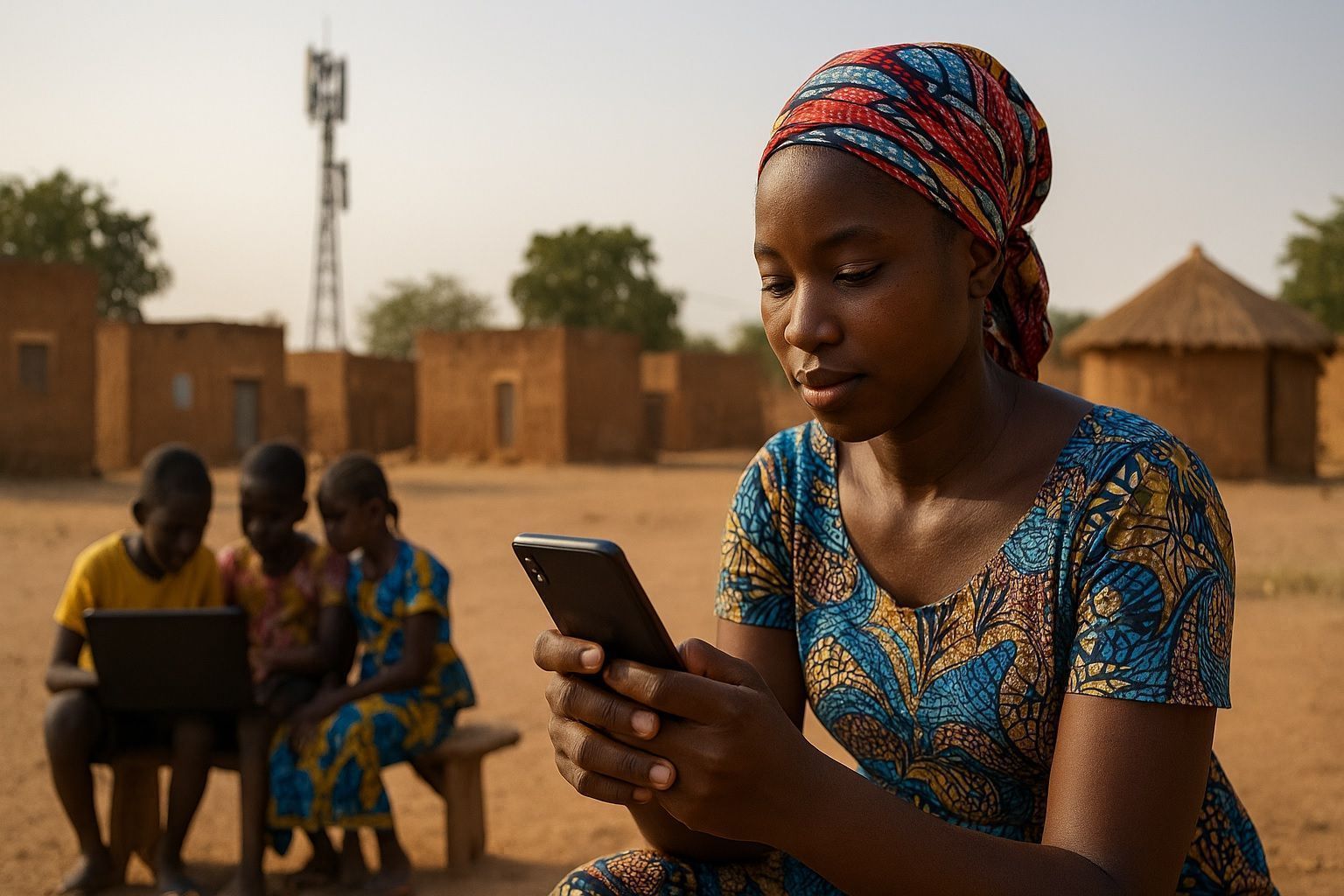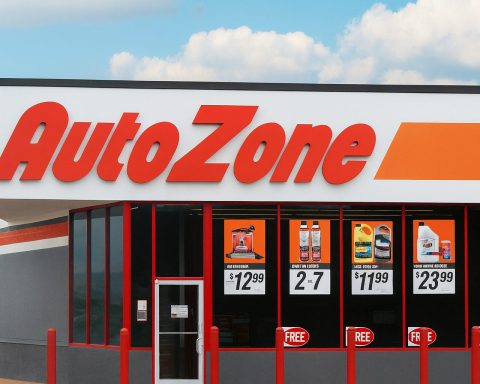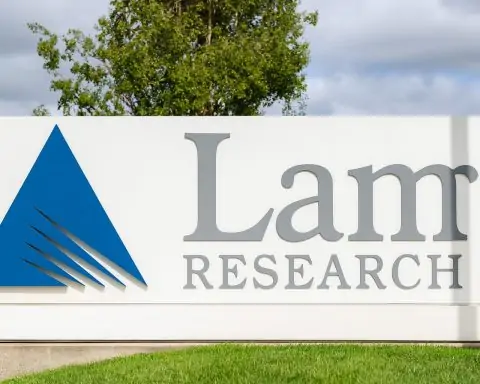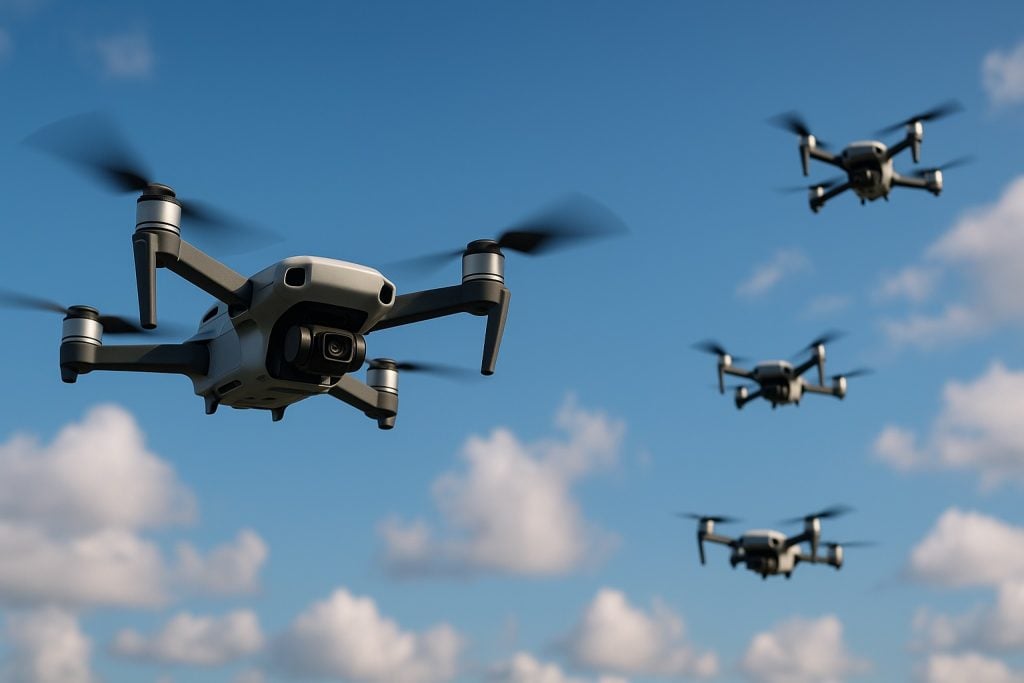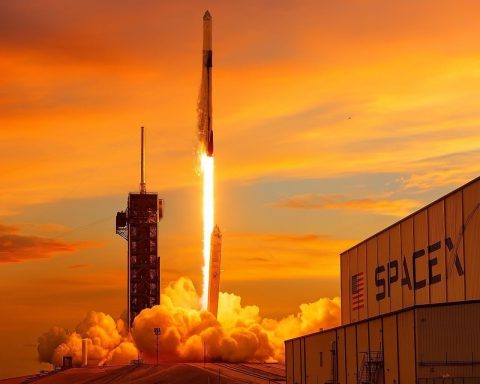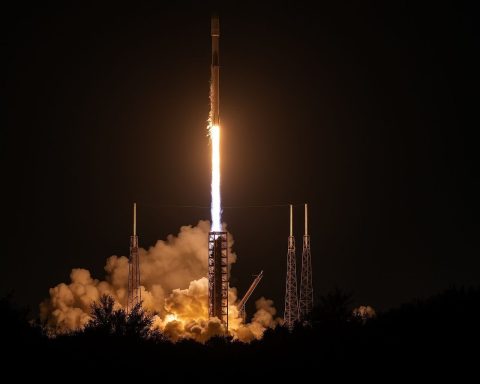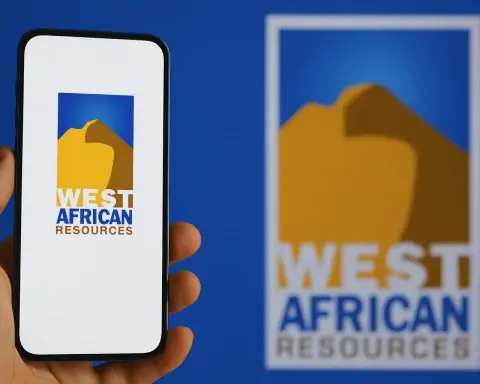- As of 2023, internet penetration in Burkina Faso is about 20%, with roughly 4.7 million active internet users in a 23 million population.
- By late 2023 there were about 17 million mobile internet subscriptions, offering ~77% potential coverage though many subscribers are not active.
- Fixed broadband remains extremely limited, with about 85,000 active fixed internet subscriptions in Q3 2023, up 140% from 2022.
- There is a pronounced urban–rural gap: 3G reaches about 64% of the country and 4G/LTE about 46%, 85% have basic mobile signal, 15% have no signal, 1,700 white zones were identified in 2022, of which only 183 were connected by that year.
- Electricity scarcity exacerbates the digital divide, with rural areas often lacking grid power and towers relying on solar or diesel, complicating device charging and reliability.
- The Universal Access and Service Fund (FASU) subsidizes rural expansion, having spent about CFA 6.2 billion (~$10.5 million) to connect 183 off-grid villages by 2022, and planning 800 new towers in 2025 (250 via the World Bank’s PACT Digital and 550 via FASU) to reach universal access by 2027.
- The market is dominated by Orange Burkina Faso (~50% market share with nearly 9 million mobile internet subscribers in Q3 2023) and Moov Africa/Onatel (~6.94 million data subscribers, ~40% share), followed by Telecel Faso (~1.8 million, ~10%), with FasoNet (~23% traffic share) and GVA Canalbox (~40,835 fiber subscribers in late 2023).
- Starlink has not been allowed yet; Burkina Faso banned unlicensed Starlink equipment in early 2024, though the service was projected to launch by 2024–2025 and was already live in 18 African countries by early 2025.
- In 2023 Burkina Faso’s average download speeds were about 35.7 Mbps on mobile and 43.2 Mbps on fixed broadband, with significant urban–rural speed gaps.
- Looking ahead to 2030, internet use could rise to 40–50% if tower rollouts, fiber expansion, and satellite options like Starlink proceed, but the last-mile, power, and security constraints may still leave some regions offline.
Current State of Internet Access in Burkina Faso
Burkina Faso’s digital landscape is marked by low internet penetration and heavy reliance on mobile networks. As of 2023, only about 17–20% of the population are internet users, well below the African average (~39%) [1] and the global average (~66%) [2]. In raw numbers, that equates to roughly 4.7 million active internet users in a country of ~23 million people [3]. This means barely one in five Burkinabè have used the internet in the last 3 months, underscoring a significant digital divide.
Mobile vs. Fixed Access: Internet access in Burkina Faso is overwhelmingly mobile-centric. By late 2023, there were about 17 million mobile internet subscriptions recorded – roughly a 77% population coverage in terms of access [4]. However, “subscription” doesn’t always mean active usage (many people have data-capable SIMs that they seldom use). In stark contrast, fixed broadband (home/office internet) is extremely limited: only about 84,807 fixed internet subscriptions were active in Q3 2023 [5]. Fixed connections – primarily new fiber-optic lines in major cities – have grown rapidly (up 140% from 2022) [6], but still account for a tiny fraction of overall internet access. Essentially, for the vast majority of Burkinabè, the internet means a mobile phone (typically using 3G/4G cellular data) rather than a home broadband line.
Urban vs. Rural Disparities: There is a pronounced urban-rural gap in connectivity. Cities like Ouagadougou and Bobo-Dioulasso enjoy far better coverage and higher internet uptake than rural villages. Nationally, about 85% of the population is covered by at least a basic mobile signal, but coverage drops off in remote areas – 3G mobile broadband reaches only ~64% of the country, and 4G/LTE covers just 46% [7]. The remaining pockets (often called “white zones”) have virtually no signal at all. As of 2022, around 1,700 localities were identified as white zones with no access to telephony or internet, mostly in sparsely populated rural or conflict-affected regions [8]. Only 183 of these had been connected by 2022 through special programs [9]. Consequently, internet penetration in cities can be many times higher than the national 20%, while in many rural areas it’s near zero. A key underlying issue is electricity – Burkina Faso suffers from low electrification, and “lack of access to electricity exacerbates the digital divide, particularly in rural areas” [10]. Simply put, if villages don’t have power to charge phones or run cell towers, internet access remains a distant dream.
Key Indicators (2023–24): (Burkina Faso vs. benchmarks)
- Internet user penetration: ~20% of population [11] (Africa average ~39% [12]; Global ~66% [13])
- Mobile subscription penetration: 116% (i.e. more SIM cards than people, due to multi-SIM usage) [14]
- Mobile internet subscriptions: ~18 million (around 77% population with potential internet access via mobile SIM) [15]
- Active internet users: ~4.7 million (20% penetration – many with access don’t actively use it) [16]
- Fixed broadband subscriptions: ~85 thousand (≪1% of population – extremely low) [17]
- Urban 4G coverage: High in cities (most urban areas have 4G/LTE from multiple operators)
- Rural coverage: Many rural areas have only 2G or no coverage; an estimated 15% of the population has no mobile signal [18].
These figures highlight that while the infrastructure footprint (mobile network coverage, SIM ownership) reaches a majority of citizens, actual internet usage remains very low. Cost, literacy, and electricity (explored below) contribute to this gap between coverage and usage.
Infrastructure Challenges – Gaps, Costs, and Power Problems
Burkina Faso faces significant infrastructure challenges that hinder broader internet access. The first is simply coverage: those “white zones” with no service reflect the difficulty of extending networks to every corner of the country. About 15% of Burkinabè live in areas with zero telecom signal [19]. Even where there is coverage, it might be 2G-only or an unreliable fringe signal. Rolling out infrastructure to remote villages is costly and yields little revenue for operators, which is why the government has had to step in with subsidies (more on that later).
Another major hurdle is electricity and power supply. Large swathes of rural Burkina Faso lack access to the electric grid. Telecom towers in those areas must run on solar panels or diesel generators – an expensive setup prone to outages. For the people themselves, charging a phone can be a challenge when the village has no reliable power. This energy gap directly translates to a connectivity gap, as noted by development agencies: lack of electricity exacerbates the digital divide in rural areas [20]. In practical terms, even an affordable 3G data plan is useless if one’s phone is dead or if the cell tower has no power.
Affordability of internet service, while a concern in such a low-income country, has actually improved in recent years. Mobile data prices in Burkina Faso are now among the most affordable in West Africa relative to income [21]. For example, a basic mobile internet package (1 GB data) can cost less than 1% of average monthly income [22], which meets the UN affordability target. However, the cost of devices is still a barrier – smartphones, computers, and even 4G-capable handsets remain expensive for low-income households. Many people continue to use basic feature phones that can’t access the modern internet beyond simple text (SMS) services.
A less obvious but critical challenge is security and stability of infrastructure. Burkina Faso has faced political instability and conflict in recent years, and telecom infrastructure has not been spared. Vandalism and insurgent attacks in certain regions (notably the north and east, where jihadist groups operate) have resulted in dozens of towers being destroyed or taken offline [23]. By August 2023, 681 telecom sites were out of service or inaccessible due to security issues – an increase from 632 the year before [24]. Each damaged tower means entire communities losing connectivity. Additionally, technicians sometimes cannot safely access or repair towers in conflict zones, leading to prolonged outages. This security challenge adds an extra layer of difficulty to expanding and maintaining the network.
Finally, as a landlocked country, Burkina Faso’s international bandwidth is limited by its reliance on undersea fiber optic cables that land in neighboring coastal countries (Ghana, Ivory Coast, etc.). All international internet traffic must transit through a few key fiber routes. The “upstream diversity” is rated as poor – there are fewer than 3 distinct international connections, which makes the country vulnerable to regional cable cuts [25]. (For instance, a major cut to submarine cables in 2023 caused internet disruptions across West Africa, highlighting Burkina Faso’s dependence on its neighbors’ gateways.) This limited international infrastructure can also keep wholesale bandwidth costs high, affecting the quality and price of retail internet service.
In summary, Burkina Faso’s connectivity challenges are multifaceted: geographical coverage gaps, electrification and power issues, affordability of devices, and security risks all interplay to keep internet access out of reach for a majority of the population.
Government Policies and Regulatory Framework
The Burkinabè government recognizes these challenges and in recent years has rolled out policies and initiatives to boost connectivity. The telecom sector is overseen by the national regulator ARCEP (Autorité de Régulation des Communications Électroniques et des Postes), which regulates operators, manages spectrum, and enforces service standards. Overall, Burkina Faso has a liberalized telecom market with multiple private operators (following reforms in the 2000s), but the government maintains an active role in pushing coverage to underserved areas.
One major policy tool is the Universal Access and Service Fund (FASU), a government-managed fund financed by levies on telecom companies. The FASU is being used to subsidize network expansion in unprofitable rural “white zones.” In late 2022, the Minister of Digital Transition announced an ambitious plan to bring mobile and internet services to 1,000 remote communities within three years [26] [27]. This plan involves direct investment of public funds to build towers and infrastructure where telecom companies would not otherwise invest. About CFA 6.2 billion (~$10.5 million) had already been spent connecting 183 previously off-grid villages by 2022 [28].
Building on that, in 2025 the government announced an even bigger push: 800 new telecom towers are planned for rollout in 2025 to fill coverage gaps [29]. Of these, 250 sites will be built under a World Bank-supported Digital Transformation Acceleration Project (PACT Digital), and the remaining 550 towers funded by the FASU [30]. The goal is to significantly improve coverage by 2027, edging closer to universal access. However, it’s worth noting that officials have provided few details on progress so far, and it’s unclear if these tower projects are on track [31]. Moreover, the plans must contend with ongoing security issues – the government has not yet explained how it will protect new infrastructure from the vandalism that has plagued existing towers [32].
In terms of the regulatory framework, Burkina Faso has been updating its laws to keep pace with digital development. In 2021, a new law against cybercrime was enacted, and in December 2024 ARCEP completed an overhaul of the digital legislation and regulations with international assistance [33]. This included auditing existing laws and drafting new regulations to align with best practices. Although details are technical, the intent is to modernize the telecom/ICT sector’s legal environment – covering everything from licensing, spectrum management, consumer protection, to digital services regulation. A more robust legal framework should, in theory, encourage investment and improve service quality if enforced properly.
The government’s stance on internet freedom and shutdowns is also notable. Unlike some neighboring countries, Burkina Faso did not resort to internet shutdowns in the past year despite security tensions – recording 0 shutdowns in the last 12 months [34]. This is a positive sign for the stability of access (users aren’t being cut off by government order), although it’s something that could always change with the security situation. Authorities have, however, pursued policies to control certain aspects: for example, a bill was introduced to limit the number of SIM cards per person, aiming to curb fraud and improve security oversight [35]. And while generally opening the market to competition, the government has been cautious about completely unfettered services (as seen in its approach to satellite internet discussed later).
In summary, Burkina Faso’s government is actively involved in expanding connectivity, using universal service funds and projects to extend rural coverage, and updating the regulatory framework to foster a competitive, secure telecom sector. The policies are well-intentioned – aiming for national broadband coverage by 2030 – but execution remains challenging in the face of financial, logistical, and security constraints.
Key Players: International and Local Internet Providers
Despite the challenges, a mix of international telecom giants and local providers are driving Burkina Faso’s internet services. The market can be broadly divided into mobile network operators and internet service providers (ISPs) (some of which overlap):
- Orange Burkina Faso: Orange – the French multinational – is the leading mobile and internet provider in the country. It commands roughly 50% of the internet market share [36] and has nearly 9 million mobile internet subscribers (Q3 2023) [37]. Orange offers 2G/3G/4G mobile services nationwide and also provides fixed broadband (including fiber in cities). Its dominance is bolstered by a reputation for better coverage and network quality, though it has faced consumer complaints over service outages and pricing.
- Moov Africa (Onatel): Moov is the brand of Maroc Telecom (a Moroccan operator) and is essentially the privatized former state telco Onatel. It holds a large share of the mobile market, with about 6.94 million mobile internet subscribers [38] (approximately 40% share). Moov/Onatel operates the backbone infrastructure and inherited many of the copper lines and older networks. It provides DSL and some fiber broadband in addition to mobile service. Maroc Telecom’s backing means Moov has investment resources, but it competes closely with Orange.
- Telecel Faso: Telecel is the third mobile operator, a smaller local player with around 1.8 million data subscribers [39] (~10% share). It has a niche in urban areas and some rural presence, but lagging network expansion and financial challenges have caused Telecel to lose subscribers recently [40]. Telecel does not have significant fixed broadband offerings, though it has experimented with some wireless broadband solutions. It often markets itself with lower prices, but network quality is perceived as lower than Orange or Moov.
- GVA (Canalbox): Group Vivendi Africa (GVA), under the Canal+ brand Canalbox, is a new influential player but focused on fiber-to-the-home broadband in major cities. GVA launched fiber internet in Ouagadougou and Bobo-Dioulasso, and has seen explosive growth. By late 2023 GVA was the largest fiber broadband provider with 40,835 subscribers, a 279% increase from the year before [41]. Its Canalbox service (offering high-speed unlimited data) has quickly attracted the expanding urban middle class and businesses. GVA’s success indicates pent-up demand for fast home internet – albeit limited to city dwellers. (Notably, GVA is purely an ISP and doesn’t offer mobile service.)
- FasoNet (Onatel): FasoNet is the fixed internet arm of Onatel/Moov and historically the main ISP for businesses and government. According to internet traffic share data, “FasoNet” holds about 23% of the internet market [42]. This likely reflects corporate leased lines, ADSL connections, and some fiber customers under Onatel. Onatel’s fiber subscriber count was 13,050 by Sept 2023 [43] (making it the third-largest fiber provider after GVA and Orange). FasoNet/Onatel benefits from owning much of the country’s telecom infrastructure (fiber backbones, international links), but it faces stiff competition in retail services.
- Other ISPs and Initiatives: A handful of smaller ISPs exist, such as VTS (which had ~600 fiber subscribers [44]), and some satellite-based providers serving NGOs or companies in remote areas. The government also operates ANPTIC (National Agency for ICT Promotion), which holds a tiny <1% market share [45] – likely providing connectivity for e-government projects and community telecenters. Overall, the ISP market for fixed internet is growing from a very small base, with Orange, GVA, and Onatel capturing almost all of the new demand for home broadband.
Competition and Market Dynamics: Market competition in Burkina Faso is considered weak to moderate – the Internet Society’s assessment rates it as “poor” in terms of competitiveness for end-users [46]. Essentially two big groups (Orange and Maroc Telecom via Moov/Onatel) dominate, and they have been fined in the past over quality of service issues and alleged cartel-like behavior. However, the entry of GVA Canalbox for fixed broadband and the presence of Telecel as a third mobile operator do provide some competitive pressure, especially on pricing. Notably, Burkina Faso has seen consumer boycotts and protests in recent years over high mobile data costs and poor service, indicating public frustration and pushing operators to adjust. The regulator ARCEP has intervened at times – for example, issuing fines to Orange, Moov, and Telecel over quality-of-service shortcomings and demanding improvements [47]. All these factors underscore that while there are multiple players, consumers have limited options, and the market is still maturing toward healthier competition.
Satellite Internet: A New Frontier (Starlink and Others)
One of the most buzzed-about developments in global connectivity has been satellite internet, especially low-Earth orbit (LEO) constellations like Elon Musk’s Starlink. For a country like Burkina Faso – with vast rural areas and patchy infrastructure – satellite broadband could be a game changer by beaming high-speed internet to any location without the need for ground towers or fiber. However, the rollout of satellite internet in Burkina Faso has been slow and fraught with regulatory hurdles.
As of early 2024, Starlink is not yet operational in Burkina Faso, and in fact the sale of Starlink equipment is officially banned by the government [48]. Burkina Faso is one of several African countries (including Côte d’Ivoire, DR Congo, Mali, Senegal, Zimbabwe, and South Africa) that moved to ban or restrict Starlink’s devices until proper licenses are in place [49]. Essentially, even though Starlink’s satellites technically cover most of Africa, the company has not secured an agreement or license with Burkinabè authorities, so regulators have warned consumers off the service. This ban underscores the government’s insistence on regulatory compliance (and perhaps protection of local telecom markets) before allowing foreign satellite operators free rein.
That said, plans for Starlink are on the horizon. According to industry trackers, Burkina Faso was projected to get Starlink service sometime in 2024 or 2025 [50], pending government approval. Indeed, Starlink has rapidly expanded in Africa in the past two years – by early 2025 it was live in 18 African countries [51] – so it is likely just a matter of time before Burkina Faso comes online. Neighboring countries like Niger have moved forward (Niger’s government granted Starlink a license in late 2024, seeing it as a way to connect remote communities). Once operational, Starlink could provide a fast but expensive option for those who can afford the hardware (~$400 for the dish) and a ~$50–$100 monthly fee. This is far out of reach for the average Burkinabè, but it could be transformative for businesses, NGOs, and affluent users in rural or underserviced areas – essentially filling connectivity gaps that may never get fiber or reliable mobile service.
Aside from Starlink, Burkina Faso has experience with older satellite internet solutions. VSAT terminals (using geostationary satellites) have long been used by banks, government offices, and aid agencies to connect remote sites. However, traditional satellite broadband is costly, with limited bandwidth. Recently, other companies like Viasat and Eutelsat (Konnect) have also been eying African markets with new satellite offerings. The government of Burkina Faso in partnership with international donors (like the Government of Luxembourg, which has ties to satellite operator SES) has deployed some satellite-based connectivity for humanitarian needs [52] – for example, to connect community ICT centers in conflict regions where terrestrial networks are down.
It’s worth noting that while satellite internet can bypass local infrastructure limits, it requires regulatory clearance in each country. Authorities are understandably concerned with issues of sovereignty, security (unmonitored communications), and competition (protecting incumbent telcos). The ban on unlicensed Starlink equipment shows that Burkina Faso is cautiously balancing these concerns against the promise of new technology.
In summary, satellite internet represents both a big opportunity and a regulatory dilemma for Burkina Faso. The technology could leapfrog ground infrastructure to connect the hardest-to-reach corners of the country (places currently with “zero bars” of signal). Companies like Starlink are on the cusp of entering the market, and when they do, Burkina Faso could see a new era of connectivity for remote schools, clinics, and communities. But adoption will likely be slow and limited by cost, and the government will keep a tight grip on this sector’s development.
How Burkina Faso Stacks Up: Neighbors and Global Benchmarks
To put Burkina Faso’s internet access in context, it helps to compare with some neighbors and peers. The country lags behind many of its West African neighbors on connectivity, though it is on par with some of the Sahelian countries in its immediate vicinity.
- Ivory Coast (Côte d’Ivoire): About 45% of Ivorians were internet users by 2023 [53], more than double Burkina Faso’s rate. Ivory Coast has invested heavily in telecom infrastructure and benefits from being a coastal hub for undersea cables. Its urban centers have widespread 4G and even 5G pilot projects, and a growing fiber network is connecting homes in Abidjan. This makes Ivory Coast one of the more digitally connected economies in the region.
- Ghana: Burkina’s southern neighbor Ghana is a West African leader in connectivity. Internet penetration in Ghana is estimated around 70% as of 2025 [54] – a remarkably high figure in Africa. Ghana’s success owes to competitive telecom markets, extensive 3G/4G coverage (including rural areas), and aggressive roll-out of broadband services. It also has higher literacy and urbanization rates which drive internet adoption. The gap between Ghana and Burkina Faso underscores how policy and market dynamics can dramatically influence outcomes.
- Mali and Niger: These two neighbors face similar challenges to Burkina Faso (landlocked, large rural populations, security issues). Mali’s internet penetration is roughly in the same ballpark as Burkina’s, hovering around 20% or lower (precise recent figures vary, and conflict has disrupted telecom services in parts of Mali). Niger has one of the lowest internet usage rates in the world – reportedly around 5–10% of the population in recent years [55]. Niger’s vast desert geography and very low electrification rate make connectivity extremely hard to achieve. Burkina Faso is slightly ahead of Niger, but all three Sahel countries significantly trail the African average.
- Nigeria: Africa’s most populous nation Nigeria has about 40% of its population online (around 50–60% penetration by some estimates in 2023). Nigeria’s sheer size gives it the largest number of internet users in Africa, but in percentage terms it’s still a reminder that even Africa’s biggest markets haven’t reached half their people with internet. Burkina Faso’s 20% looks small, but it’s not that far off from Nigeria’s situation a few years ago – indicating room for catch-up if the right investments are made.
- Global average: Approximately 66% of the world’s population is online in 2024 [56]. Leading countries (in Europe, North America, and parts of Asia) have well over 90% internet penetration. Even within Africa, there are standouts like Morocco (~92%) and small nations like Cabo Verde (~73%) that show what’s possible [57]. Burkina Faso’s ~20% is clearly on the lower end of the global spectrum. It highlights the urgency for improvement – the country will need to triple or quadruple its internet user base just to reach the current world average.
In summary, Burkina Faso is trailing behind regional and global peers in internet access, especially compared to coastal and more developed economies. However, it is roughly in line with what one might expect given its economic and geographic context (similar to Mali/Niger). The hope is that ongoing projects and emerging technologies (fiber rollout, 4G expansion, satellite broadband) will allow Burkina Faso to narrow this gap in the coming years, possibly leapfrogging stages of development.
Opportunities and Barriers to Broader Connectivity
Looking ahead, Burkina Faso stands at a crossroads in terms of digital development. There are several encouraging opportunities that could accelerate internet access, as well as persistent barriers that could hold it back. Here’s an analysis of the most salient factors:
Opportunities fueling connectivity growth:
- Government and Donor Initiatives: The commitment to build 800 new towers and connect 1,000 remote zones by 2027 [58] [59] is a major opportunity. If executed, this will dramatically increase the population coverage of mobile networks. International development partners (World Bank, etc.) and the Universal Service Fund are injecting capital to make this happen. These investments can close the coverage gap and bring millions more within signal range.
- Expansion of 4G (and future 5G): Burkina Faso is rapidly upgrading from 2G/3G to 4G LTE networks. In 2023 alone, 4G subscriptions grew by 79% [60] as operators expanded LTE coverage. Faster speeds and better quality from 4G can improve user experience and attract new users (people are more likely to use the internet if it’s high-speed and reliable). While 5G is not yet deployed, the groundwork with fiber backhaul and data centers now will ease future 5G rollouts in urban hubs when the time comes.
- Fiber optic growth: The surge in fiber-to-the-home subscriptions (thanks to GVA Canalbox and others) is creating a cadre of high-bandwidth users in cities. This has spillover effects: more local content and services can develop when a critical mass has fast internet. It also pressures mobile operators to improve their offerings, since consumers see what true broadband offers. The increasing domestic fiber network (including fiber links to neighboring countries) will reduce bandwidth costs and improve network resilience over time.
- Falling Costs & Affordable Access: The cost of mobile internet in Burkina Faso has been dropping, making it one of the more affordable data markets in Africa [61]. Cheap entry-level smartphone models are also becoming available. As devices and data plans become more affordable, more of the population can come online. There’s evidence that even low-income rural users will buy data if prices are low enough and they see value in the internet (e.g., for communication, mobile money, or entertainment).
- Youthful, Eager Population: Burkina Faso has a young population (median age around 17). This digital-native generation is generally eager to use social media, online services, and smartphones. They represent a huge demand pool for internet access if the infrastructure and affordability pieces fall into place. Already, platforms like Facebook have millions of Burkinabè accounts (often accessed sporadically). This latent demand could turn into sustained usage as coverage expands.
- Satellite Broadband and Innovative Tech: The arrival of LEO satellite options (Starlink) and possibly other innovations (like community Wi-Fi hubs, balloons or drones for connectivity, etc.) provide a wildcard opportunity. If Burkina Faso leverages these technologies, it could bypass some of the traditional infrastructure deployment delays. For example, connecting schools or clinics in a remote area via satellite can be done much faster than waiting for fiber or microwave links. Additionally, the government’s openness to pilots (such as using satellite for emergency communications) indicates a willingness to adopt new solutions where they make sense.
Barriers and challenges that persist:
- Poverty and Low Literacy: Fundamental socio-economic factors cannot be ignored. A large portion of Burkina Faso’s population lives in poverty and has limited formal education. Even if internet service is available, many cannot afford smartphones or computers, and some, especially older adults, lack the literacy or digital skills to use online services. This human capital barrier means that simply building networks isn’t enough – there is a need for digital literacy programs, local language content, and services that demonstrate clear value to the rural poor (e.g., agricultural information, mobile banking, etc.).
- Electrical Infrastructure: As mentioned, electricity access remains low (particularly in rural Burkina Faso). Until the electrification rate improves (bringing power to villages and ensuring more reliable supply in cities), internet access will be hamstrung. Rolling blackouts or off-grid communities translate to interruptions in connectivity. The telecom sector may need to invest in solar power solutions and backup systems for both network towers and for community charging stations to mitigate this.
- Security and Political Stability: The ongoing security crisis due to extremist insurgencies poses a severe barrier. Not only does it lead to destruction of infrastructure [62], but it also diverts government attention and resources. In unstable regions, companies are hesitant to invest in new telecom sites, and even maintenance of existing sites is risky. Political instability (e.g., coups in 2022) can also slow down regulatory reforms and discourage foreign investment. A stable environment is crucial for long-term telecom projects to succeed.
- Regulatory Bottlenecks: While the government has been proactive, there are still regulatory and bureaucratic hurdles that can slow progress. For instance, the delay in licensing new technologies like Starlink shows a cautious approach that, while understandable, means the public must wait longer for services that are technically available [63]. Also, spectrum allocation for future expansions (like 5G) and streamlining permits for tower construction are areas where policy could become a bottleneck if not handled efficiently. Maintaining a balance between control and innovation will be an ongoing challenge for regulators.
- Market Competition and Investment: The current market structure might limit aggressive expansion. The top two operators (Orange and Moov) may not have strong incentives to compete in less profitable rural areas without pressure. Telecel, the smaller player, has limited capital to expand coverage on its own. There is a need for continued investment – possibly new entrants or public-private partnerships – to push connectivity further. If the market remains semi-duopolistic, improvements in price and quality could stagnate once the initial round of expansions (funded by donors/government) is over.
- Maintenance and Quality of Service: Ensuring that existing connections actually deliver usable internet is a challenge. Many users complain of slow speeds and network outages. Burkina Faso’s average download speeds as of 2023 were around 35.7 Mbps on mobile and 43.2 Mbps on fixed broadband [64], which are decent on paper, but urban-rural disparities are huge. In rural areas, actual speeds can be a tiny fraction of that, if any data connection exists. Network congestion in cities and limited international bandwidth can also degrade quality. Without continuous upgrades and maintenance, the user experience may remain subpar, causing people to lose interest in using the internet.
Outlook: Despite the barriers, the overall trajectory for Burkina Faso is one of gradual improvement in connectivity. The period 2023–2025 has seen momentum – with policy focus, infrastructure projects, and technology pilots converging. If peace and stability hold, and if the various plans (tower rollouts, fiber expansion, possible Starlink introduction) come to fruition, Burkina Faso could significantly raise its internet penetration by the end of the decade. Optimistically, the country might go from ~20% internet use today to 40–50% by 2030 – essentially catching up to where some neighbors are now. That would transform the socio-economic landscape, enabling new opportunities in education, e-commerce, e-government, and more.
However, the “last mile” of connectivity – reaching the hardest-to-connect populations – will likely remain the toughest challenge. The combination of poverty, remote geography, and insecurity means that without sustained effort and innovation, a portion of the population could stay offline even as the rest leap ahead. The digital divide within Burkina Faso could deepen if urban areas enjoy fiber and 5G while some rural communities still struggle with 2G. Bridging that gap will require not just technology, but also community-driven approaches, inclusive policies, and perhaps regional cooperation (since the internet knows no borders).
In conclusion, Burkina Faso’s internet future is poised between big hopes and harsh realities. The current state is sobering – only a fifth of citizens online, with glaring disparities – yet the ongoing initiatives and emerging technologies are very promising. The coming years will be critical to see if the “Starlink dreams” and nationwide broadband goals can be realized, pulling Burkina Faso firmly into the digital age. The world is watching as this resilient nation tackles the formidable task of connecting its people, one remote village and one new user at a time.
Sources:
- Internet Society Pulse – Burkina Faso Country Report (2023) [65] [66]
- ARCEP Burkina Faso – Market Data Q3 2023 (published Jan 2024) [67] [68]
- Developing Telecoms – Burkina Faso to expand connectivity to underserved areas by 2027 [69]; More towers planned for 2025 [70] [71]
- Ecofin Agency – Starlink’s challenge in Africa: navigating regulations (Mar 2024) [72]
- DataReportal – Digital 2024: Burkina Faso (Jan 2024) [73]
- Emergency Telecom Cluster (ETC) Sahel Fact Sheet (Jan 2024) [74]
- Statista / Business Insider Africa – Internet penetration comparisons (2023–2025 data) [75] [76]
- Internet World Stats / World Bank data – Global and regional internet usage benchmarks [77] [78]
References
1. pulse.internetsociety.org, 2. datareportal.com, 3. digitalmagazine.bf, 4. digitalmagazine.bf, 5. digitalmagazine.bf, 6. digitalmagazine.bf, 7. developingtelecoms.com, 8. developingtelecoms.com, 9. developingtelecoms.com, 10. www.etcluster.org, 11. digitalmagazine.bf, 12. pulse.internetsociety.org, 13. datareportal.com, 14. developingtelecoms.com, 15. digitalmagazine.bf, 16. digitalmagazine.bf, 17. digitalmagazine.bf, 18. developingtelecoms.com, 19. developingtelecoms.com, 20. www.etcluster.org, 21. pulse.internetsociety.org, 22. pulse.internetsociety.org, 23. developingtelecoms.com, 24. developingtelecoms.com, 25. pulse.internetsociety.org, 26. developingtelecoms.com, 27. developingtelecoms.com, 28. developingtelecoms.com, 29. developingtelecoms.com, 30. developingtelecoms.com, 31. developingtelecoms.com, 32. developingtelecoms.com, 33. www.jonesday.com, 34. pulse.internetsociety.org, 35. developingtelecoms.com, 36. pulse.internetsociety.org, 37. digitalmagazine.bf, 38. digitalmagazine.bf, 39. digitalmagazine.bf, 40. digitalmagazine.bf, 41. digitalmagazine.bf, 42. pulse.internetsociety.org, 43. digitalmagazine.bf, 44. digitalmagazine.bf, 45. pulse.internetsociety.org, 46. pulse.internetsociety.org, 47. developingtelecoms.com, 48. www.ecofinagency.com, 49. www.ecofinagency.com, 50. blog.telegeography.com, 51. africa.businessinsider.com, 52. www.etcluster.org, 53. datareportal.com, 54. www.statista.com, 55. www.etcluster.org, 56. datareportal.com, 57. www.statista.com, 58. developingtelecoms.com, 59. developingtelecoms.com, 60. digitalmagazine.bf, 61. pulse.internetsociety.org, 62. developingtelecoms.com, 63. www.ecofinagency.com, 64. pulse.internetsociety.org, 65. pulse.internetsociety.org, 66. developingtelecoms.com, 67. digitalmagazine.bf, 68. digitalmagazine.bf, 69. developingtelecoms.com, 70. developingtelecoms.com, 71. developingtelecoms.com, 72. www.ecofinagency.com, 73. digitalmagazine.bf, 74. www.etcluster.org, 75. www.statista.com, 76. datareportal.com, 77. datareportal.com, 78. pulse.internetsociety.org
